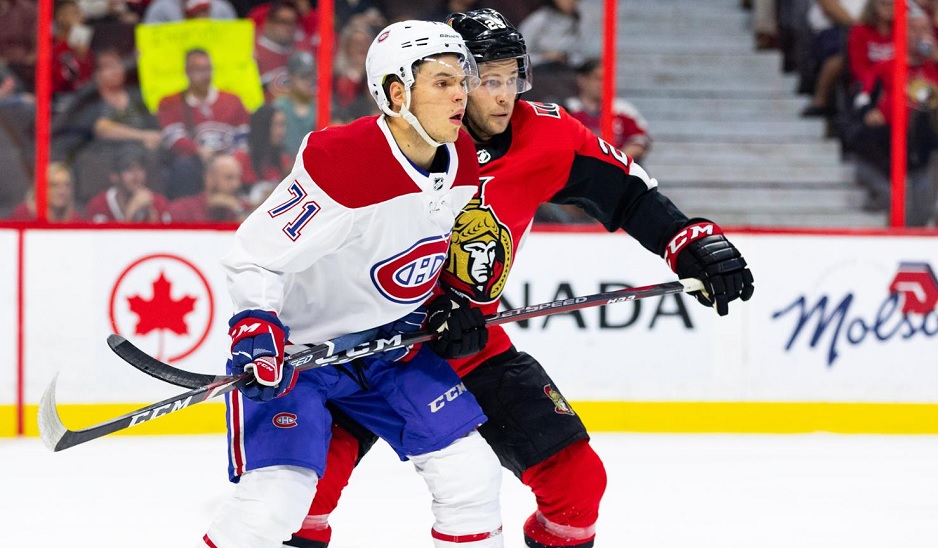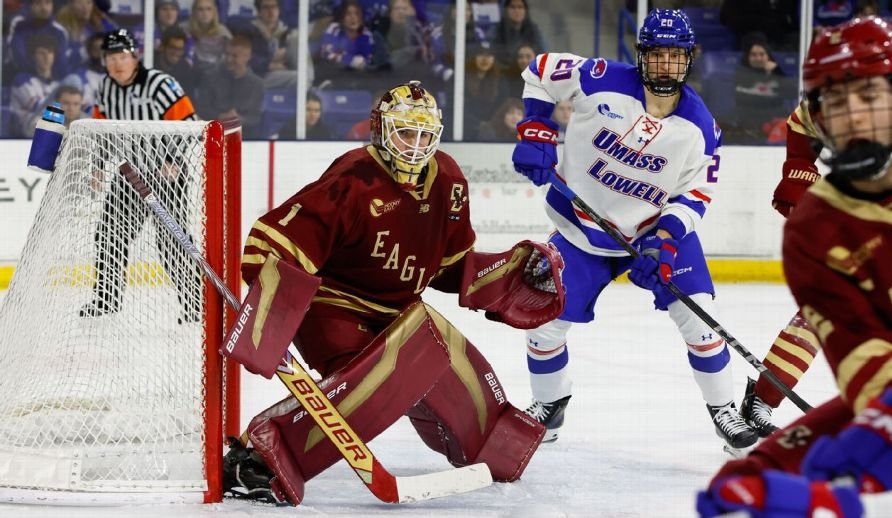HabsWorld.net --
One of the unique elements for the upcoming season is the creation of the taxi squad. If used properly, it can also solve Montreal’s salary cap crunch in the process.
First, a quick rundown of some of the rules.
– The cap rules for someone on the taxi squad are the same as if they were sent to the minors. In other words, a player making $1.075M or less will be entirely cap-exempt; anyone making more than that would count at the difference between their AAV and $1.075M.
– Each taxi squad must have at least one goalie. The Habs have four candidates in Charlie Lindgren, Cayden Primeau, Vasili Demchenko, and Michael McNiven. All have cap hits under the threshold.
– A minimum of four players must be on the roster while the maximum is six players. Those players can participate in NHL practices and travel with the team (though it’s not required).
– Players are paid their AHL salaries (if on two-way deals) while on the taxi squad. If it’s a one-way deal, they still get their full NHL pay.
– Standard waiver rules apply. If someone on the Habs has to clear waivers to go to Laval, they’ll have to clear waivers to go to the taxi squad. It also means that if recalled, they won’t have to re-clear to go back until they’ve played 10 NHL games or been on the active roster for a total of 30 days.
That two-player difference between the minimum and maximum creates an intriguing window for cap-strapped teams like Montreal to utilize.
Last month, I wrote about how the Habs can get to a 22-player roster to ensure they have a reserve in case of a game-day injury. You can read it here but the quick version is that Jordan Weal gets sent down, Jake Evans is a full-time player, and someone making the league minimum salary is the 13th forward. That would put them with about $8,691 in cap space. With there only being 116 days in the season instead of 186, that’s barely enough for a one-day recall for someone making $700,000.
So, how can this solve their cap woes? Simple. Instead of carrying the six-player taxi squad, just carry four. Then they can use those last two slots to shuffle waiver-exempt players off the roster on non-game days to bank cap space.
Regular roster rules say that a team can’t go below the minimum number of forwards or defencemen. That’s not good news for Alexander Romanov ($894,167) as it makes him one of the cap casualties by default; they can only send one forward down and he’s the only waiver-exempt defenceman. The second player becomes one of Jesperi Kotkaniemi ($925,000), Nick Suzuki ($863,333), Evans ($750,000), or the minimum-salaried 13th forward ($700,000). Obviously, Kotkaniemi is the ideal second choice from a cap perspective but I wouldn’t be shocked if they picked Evans or the 13th forward just to not run the risk of annoying a player they’re building around. Let’s use Evans for this example.
The daily breakdowns for Romanov and Evans are as follows:
Romanov: $894,167/116 = $7,708.73
Evans: $750,000/116 = $6,465.52
For each day those two are ‘papered’ to the taxi squad, the Habs are banking $14,174.25 in cap room.
There are 90 days between the start of the season and the trade deadline. In a perfect world where no one gets hurt, the Habs could send them down for about half of those days (I’m estimating since the schedule isn’t out yet) which would bank them somewhere around $630,000 in cap space. There are 26 days between the deadline and the end of the season. Divide those two numbers and you get a daily spending rate of $24,230.77 which is enough to bring in someone with a full-season cap hit of about $2.8 million on deadline day and still be in cap compliance.
Of course, this isn’t a perfect world and there will be injuries which will cut into any deadline spending room. It will cost a minimum of $6,034.48 to recall someone to cover that spot on the roster (the league minimum salary divided by 116 days, the length of the season). The good news is that each day that Romanov and Evans are papered down in our scenario, they get two days worth of injury replacement recalls which, as long as they don’t have a whole bunch of injuries early on, should give them enough of a cushion as the season progresses to avoid needing to go into a situation where they have to dress fewer than 18 skaters to get a short-term cap-exempt recall.
This is just one set of options too and the numbers change with a different forward subbed in for Evans. They could really get creative and send Romanov, Kotkaniemi, Suzuki, and Evans down on non-game days and recall two minimum-salaried taxi squad forwards to comply with minimum roster requirements. That would free up a lot more daily room and probably give them enough room for the inevitable injury recalls and enough to add a player of some significance at the trade deadline. I don’t think they’d take it that far though unless a rash of early injuries forces their hand.
The taxi squad is in place to simply the recall process for teams needing to bring someone up at a time where travel restrictions and quarantining protocols are going to be stricter than usual. But for the Habs and about a third of the rest of the league that’s in cap trouble, it’s also a get out of cap jail free card as long as they opt for the minimum-sized roster instead of the six-player maximum. John Sedgwick, Montreal’s Vice-President Hockey Operations and Legal Affairs (and their capologist), is going to be even busier than usual this coming season as a result.


